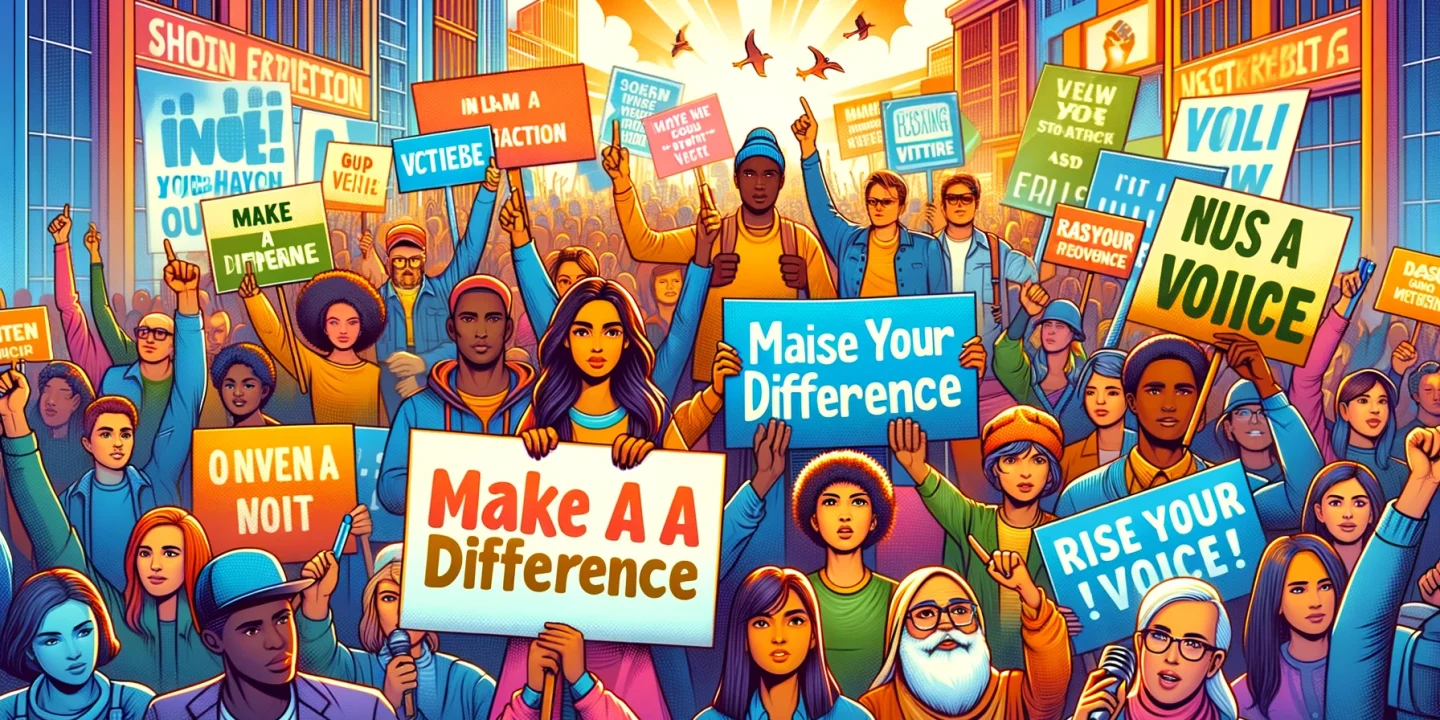Table of Contents
- Introduction
- Key Takeaways
- Understanding Advocacy and Activism
- Identifying Your Cause
- Educating Yourself
- Joining Organizations and Groups
- Volunteering Your Time
- Utilizing Social Media
- Engaging with Your Community
- Participating in Protests and Demonstrations
- Writing and Lobbying for Policy Change
- Building a Network
- Sustaining Your Efforts
- Conclusion
- FAQs
Introduction
Advocacy and activism play vital roles in shaping societal change and addressing issues of injustice. If you’re passionate about a cause and want to make a difference, understanding how to get involved is crucial. This step-by-step guide for beginners will provide you with the knowledge and tools needed to become an effective advocate and activist.
Key Takeaways
- Advocacy and activism are essential for societal change.
- Identify a cause that resonates with you deeply.
- Educate yourself thoroughly about the issue.
- Engage with organizations and volunteer your time.
- Use social media to amplify your message and connect with others.
Understanding Advocacy and Activism
Advocacy involves supporting a cause or proposal, often aiming to influence public policy or resource allocation. Activism is more action-oriented, involving direct efforts to bring about social or political change. Both are integral to driving progress and can be performed individually or collectively.
Identifying Your Cause
To get involved in advocacy and activism, begin with identifying an issue that you are passionate about. This could range from environmental protection to human rights or education reform. Reflect on your values and interests, and choose a cause that resonates with you on a personal level.
Educating Yourself
Once you’ve chosen your cause, educate yourself about it. Read books, articles, and research papers. Follow experts and organizations dedicated to the issue. Understanding the history, current status, and key players involved will enable you to advocate effectively and confidently.
Joining Organizations and Groups
Numerous organizations and groups work on various causes. Join these groups to connect with like-minded individuals, gain insights, and participate in coordinated efforts. Many organizations offer volunteer opportunities, training sessions, and events that can help you get started.
Volunteering Your Time To Get Involved In Advocacy And Activism
Volunteering is a practical way to get involved. Offer your time and skills to organizations and community groups. Whether it’s organizing events, providing administrative support, or directly helping those affected by the issue, your contribution will make a difference.
Utilizing Social Media
Social media is a powerful tool for advocacy and activism. Use platforms like Twitter, Facebook, and Instagram to raise awareness, share information, and connect with others. Create and share content that educates and inspires action. Engage with your audience by responding to comments and messages.
Engaging with Your Community
Building local support is crucial for any advocacy effort. Engage with your community by attending meetings, hosting events, and collaborating with local leaders. Community support can amplify your message and create a stronger impact.
Participating in Protests and Demonstrations
Protests and demonstrations are effective ways to draw attention to your cause. Participate in peaceful protests to show solidarity and demand change. Ensure you are aware of your rights and the proper conduct for demonstrations.
Writing and Lobbying for Policy Change
Writing letters, emails, and articles to policymakers and media outlets can influence public opinion and policy decisions. Lobbying involves directly interacting with legislators to advocate for your cause. Learn the legislative process and build relationships with policymakers to make your voice heard.
Building a Network
Networking with other advocates and activists is essential for sharing resources, strategies, and support. Attend conferences, join online forums, and participate in workshops to build your network. Collaboration strengthens your efforts and enhances your impact.
Sustaining Your Efforts
Advocacy and activism can be demanding. It’s important to stay motivated and avoid burnout. Set realistic goals, celebrate small victories, and take breaks when needed. Remember that sustained effort is key to achieving long-term change.
Conclusion
Getting involved in advocacy and activism is a rewarding journey that allows you to make a positive impact on the world. By following these steps, you can become an effective advocate and activist, driving change and promoting justice in your community and beyond.
FAQs
1. What is the difference between advocacy and activism?
Advocacy involves supporting a cause or influencing policy, while activism involves direct actions aimed at creating social or political change.
2. How do I choose a cause to support?
Reflect on your values, interests, and the issues that resonate with you on a personal level to choose a cause.
3. How can I get involved if I don’t have much time?
Start small by using social media to raise awareness or volunteer for short-term projects. Every contribution counts.
4. What should I do if I face opposition?
Stay informed, remain respectful, and use evidence-based arguments. Connect with supportive communities for encouragement.
5. How can I avoid burnout in activism?
Set realistic goals, take regular breaks, and celebrate small achievements. Focus on long-term sustainability rather than immediate results.
For further reading on this topic, visit Amnesty International and Change.org.
Connect with me on Facebook , Twitter

